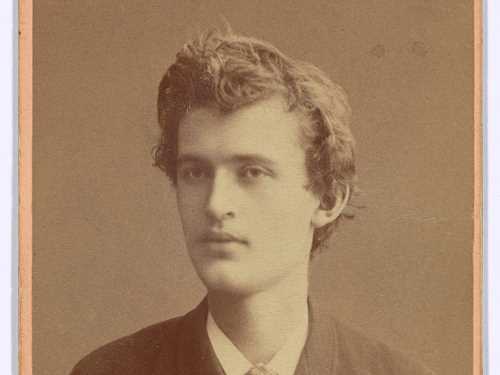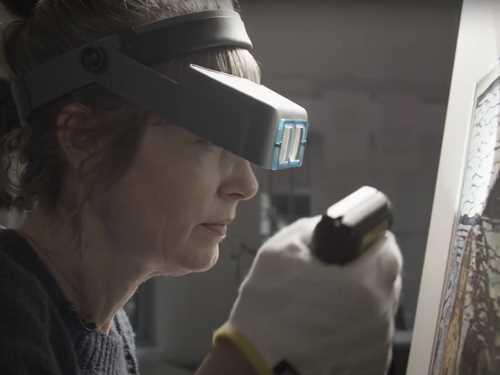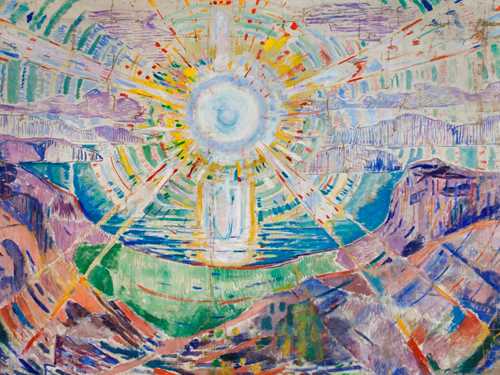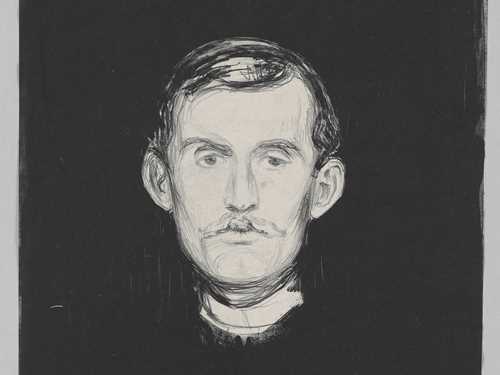Edvard Munch’s hectographs
What exactly are hectographies? And how did Munch work with this technique? Two of MUNCH's experienced staff have delved into this unknown printing method, and write here about their exciting findings.
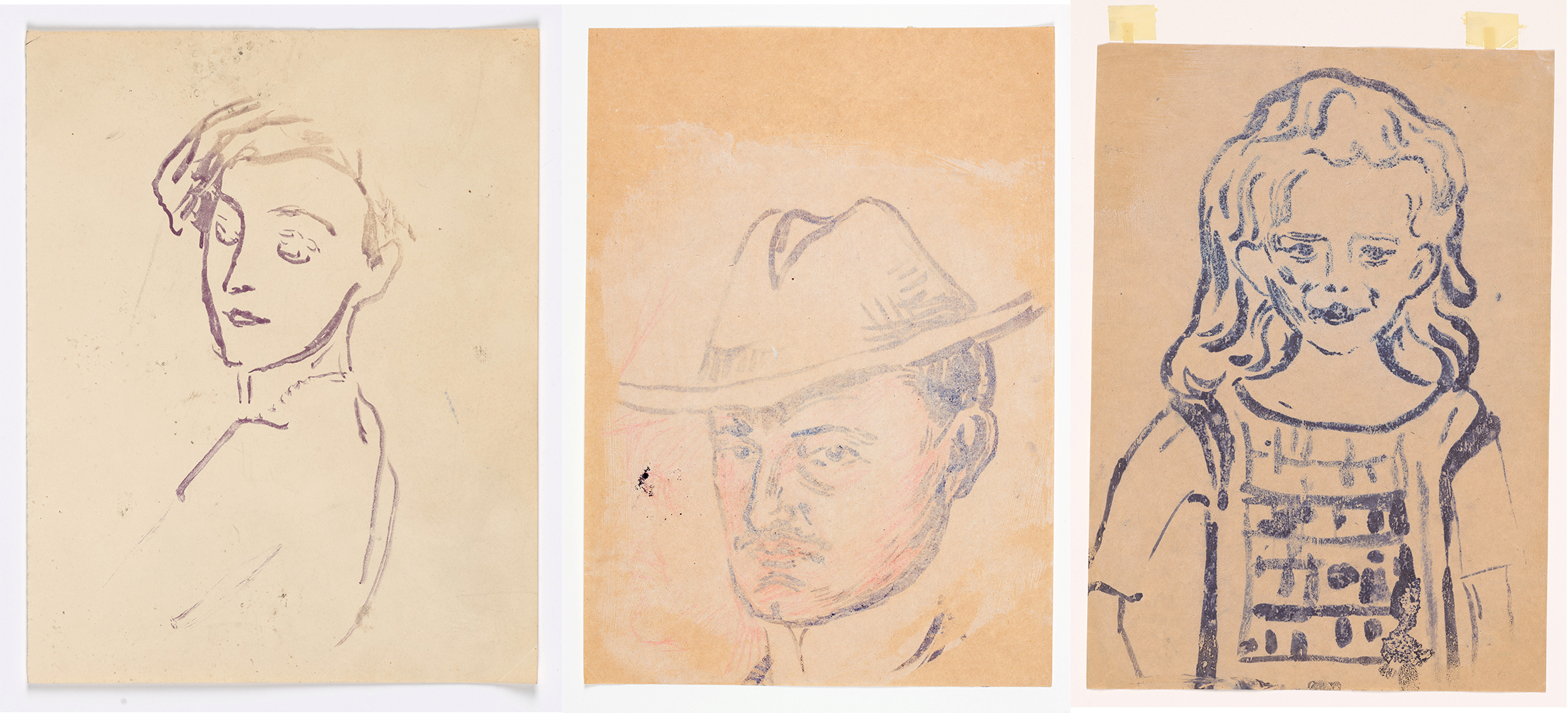
A selection of Munch's hectographies. Photo: Munchmuseet
In 2023, we have conducted a research project on the hectographs at Munchmuseet. Amongst other things we wanted to understand the technique better, review the collection, and understand how Munch created his hectographs. Through several days of workshops, we prepared six hectographic inks and several gelatins from historic recipes.
Once again, Munch surprised us, as he frequently does, with his inquisitive and technical abilities to test and fully utilize this printing technology. While hectographic printing might seem straightforward at first glance, there has been (for Munch) quite a bit of room for visual experimentation and innovations with the technique.
The graphic artist Munch
Edvard Munch (1863-1944) was a prolific printmaker, working in all the major techniques (etching, lithography and woodcut). In the large collection of Munch’s graphic prints at Munchmuseet, there is a substantial group of hectographs. This is an obsolete printing technique that was used for multiplying text and drawings using gelatin and hectographic ink.
Munch worked with hectographs for close to thirty years, from 1905-1934.The museum has a total of 506 prints. His sustained preoccupation with hectographs resulted in 100 different motifs.
The three main printing techniques used by Munch utilize a printing plate. This is either of metal (which is used for etchings), stone (which is used for lithographs), or wood (which is used for woodcuts). The artist scratches, carves or draws the image onto the plate. When this is completed, the printing plate can be inked. The paper is placed on top of this andpressure is applied. This is how the image on the printing plate is transferred to the paper.
Munch worked in all the three major techniques, but it is less known is that he also combined techniques. For example, in Vampire II (Woll G 41), he combines lithography and woodcut and prints from several plates to achieve the desired results. In The Girls on the Bridge (1918, Woll G 628), Munch has combined lithograph and zincograph. And in some versions of Two Women on the Shore (1898, Woll G133) he has combined woodcut with linocut.
As we can see, Munch did not stick to traditional ways of working with graphic prints. He experimented, innovated, and combined techniques. While the mentioned printing techniques are still used, Munch’s use of hectography seems very curious to us today.
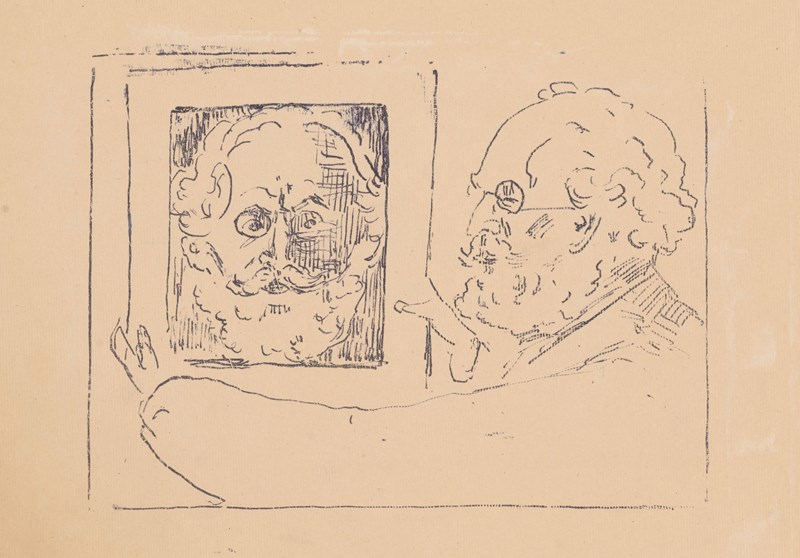
What exactly is Hectography?
Hectography differs from the other printing techniques Munch used because there is no printing plate. What is instead used is gelatin in a shallow dish. The gelatin consists of glycerin and gelatin. A drawing is made on paper, using hectographic ink of synthetic dyestuff (commonly containing aniline dyes). The drawing is placed on the gelatin, face down. After about one minute, the paper can be removed. The drawing has then been transferred to the gelatin. After this, blank pieces of paper can be placed onto the inked gelatin surface, to make new prints.
The number of prints that it is possible to make from a drawing is likely less than 50, and not 100, as is implied in the name of the technique name would imply (hecto = one hundred). Hectography was invented in the 1870s, and was mainly used to duplicate text documents, and later for architectural drawings. The technique was eventually replaced by the spirit duplicator and the photocopier.
HECTOGRAPHY AMONG ARTISTS
We do not know what prompted Munch to work with hectographs, and not many examples exist from other artists for comparison. However, examples from Emil Nolde, Max Pechstein and Russian avant-garde artists such as Olga Rozanova and Nikolai Kul'bin can be found in museum collections today. This makes the large quantities of Munch’s hectographs a unique material. It enables us to understand how an artist worked in this medium. Emil Nolde writes in his biography: “After I had begun etching and cutting woodblocks to print woodcuts,I was looking for other techniques of printmaking. With the most basic of methods, similar to those with which ordinary leaflets were being printed, I produced a few hectographs.”
On one of Munch’s hectographs, Vignette: A Wounded Magpie (Woll G H 26), he has written:
“Printed on my secret press”.
This sort of meta-commentary on his work is not
unheard of when it comes to Munch. The most famous is the penciled sentence “Could only have been painted by a madman” on the 1893 version of Scream (Nasjonalmuseet, Oslo).
Indicating that hectography was a form of secret printing press for him may give us some clues to understand Munch’s long-time preoccupation with this technique.
Other printing methods required laborious preparations of the printing plate, and oftentimes a professional printer was needed to make the prints. It was time consuming and costly. Hectographs, on the other hand, can be made with ingredients that were then readily available in shops. The gelatin could be made in a shallow dish he had in his cupboard, in a few hours. Munch could print the images himself, without the involvement of others. And when he was done, the equipment took up little space
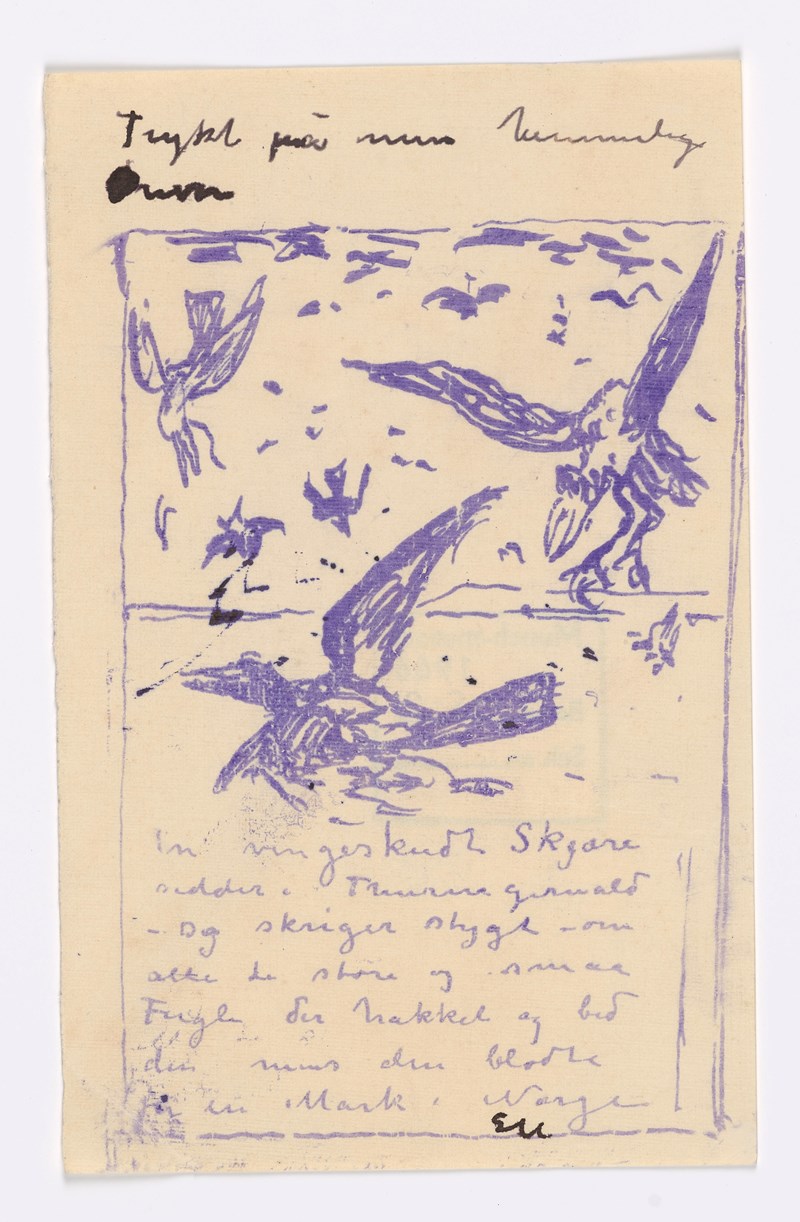
Hectography today
The hectographic technique was very common around 1900. It was a way to duplicate documents in a time when copy machines and printers did not exist. Despite its potential and 3easy-to-use approach, the technique was not without its drawbacks and limitations. The lightfastness of hectographic ink varies but is generally poor, and prints can begin to fade within a short period of time when exposed to light (some as soon as 5 days). Therefore, much of the material created over 100 years ago has not survived. It has simply vanished due to light exposure or other environmental factors. Because of hectographs’ sensitivity to light exposure, they are difficult to exhibit safely at museums.
It seems to us today that the use of hectography for creating visual art was rare in Munch’s lifetime, due to the very few examples in existent. However, it is likely that much material has been lost due to overexposure to light. It is also likely that some material gets classified as drawings due to little knowledge about the hectographic technique.
FACTS ABOUT HECTOGRAPHS
Since hectographs are so sensitive to light exposure it is important to identify a hectograph.
They can easily be mistaken for an ink drawing. But they need special attention when it comes to storage and handling and should not be treated as a graphic print or ink drawing. It is difficult to generalize as hectographic comparative material is very scarce. But after reviewing the collection of hectographs at Munchmuseet, we can give some indicating factors to lookfor.
How to identify a hectograph:
1. Ink color: Hectographic inks can be many colors, purple, pink, blue, green, black, and red. The colors are vibrant and intense, including shades that are difficult to achieve with natural dyes. The most common and widely used is purple, also known as aniline purple.
2. Coverage: While the first prints are often quite dark, most hectographs are quite light with subtle shading. The coverage of the ink is often translucent, resembling watercolors.
3. Fuzzy lines: In hectographs it is not uncommon to see lines that are a bit fuzzy. Fine lines are not crisp, and it is common to see a kind of “feathering”.
4. Bubbles: In thick ink lines it is possible to find what may be described as “bubbles”. These are lighter patches (or areas devoid of ink completely) within a line or inked area. These bubbles are the result of having too much wet ink on the original drawing as it gets transferred to the gelatin.
5. Metallic looking ink: If you have a metallic looking sheen on the inks in your drawing, this might be an original hectographic drawing. Drawings made with hectographic ink can also display a discharge of glycerin around the inked lines.
